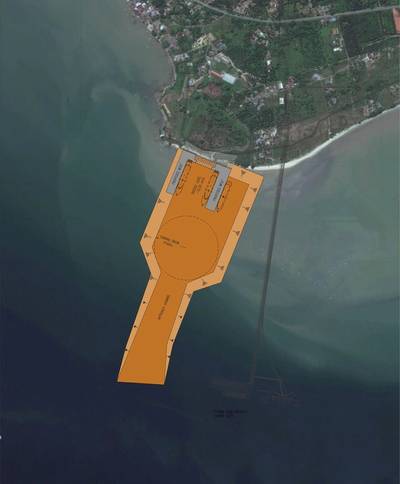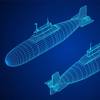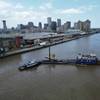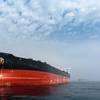BMT Designs Jetty for New Malaysia Refinery Construction
BMT Asia Pacific Pte Ltd (BMT), says it has completed a concept design for the Material Off Loading Facility (MOLF) at Petroliam Nasional Berhad’s (Petronas’) proposed Refinery and Petrochemical Integrated Development (RAPID) complex in southeast Johor, Malaysia.
The RAPID project will help to address the growing need for petroleum and commodity petrochemical products in the Asia Pacific region. The proposed RAPID refinery will have a capacity of 300,000 barrels per day that will produce naphtha and liquid petroleum gas (LPG) feedstock for the RAPID petrochemical complex, as well as gasoline and diesel that meet European specifications.
BMT explain that the RAPID petrochemical complex will have a Naphtha Steam Cracker that will produce a number of commodity products. In addition to the production units, the RAPID development will provide storage and logistics facilities for a number of dry and liquid bulk products.
Working in partnership with Technip, the front-end engineering design (FEED) contractor for the project, BMT provided a concept design for a temporary, heavy lift jetty. This jetty will be an integral part of the infrastructure needed to realise the RAPID project.
Per Cato Roed, Managing Director of BMT Asia Pacific Pte Ltd explains: “Given that heavy lifts of specialised modules and equipment will be performed at the jetty during the RAPID project construction phase, we needed to carefully consider the customer’s requirements and ensure an optimum layout. Taking the temporary nature of the jetty into consideration, it was also important for us to optimise the design in relation to several dimensions, notably sedimentation and maintenance dredging requirements.”
BMT carried out the conceptual design of the MOLF, covering geotechnical and marine structural engineering design activities, as well as a number of specialist studies and surveys needed for adequately evaluating the options available.
Marine studies utilising BMT’s navigation simulation tool, REMBRANDT, were also completed to better understand the possible operational limits associated with the ships coming into the port and therefore the impact this would have on the jetty design.
Per Cato Roed continues: “Our proven track record and extensive experience, supported by sophisticated design and optimisation tools has allowed us to provide an optimum design for our customer.”
www.bmtasiapacific.com











